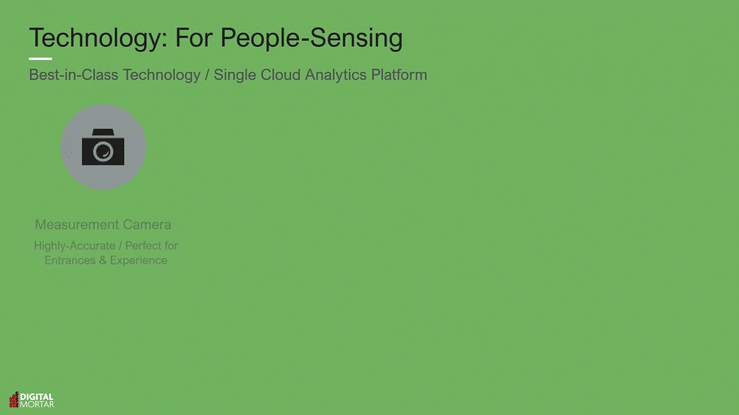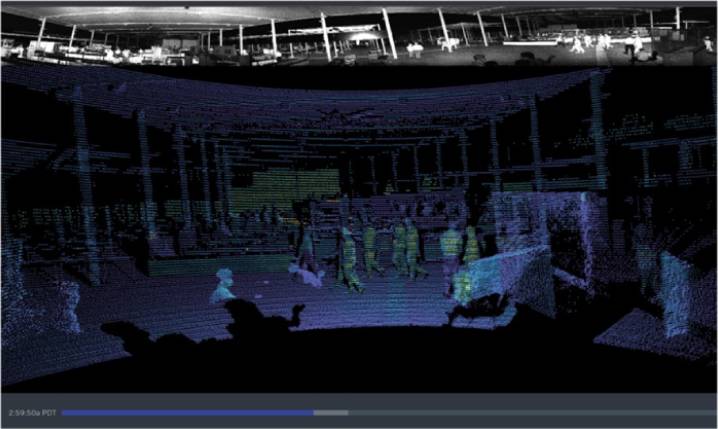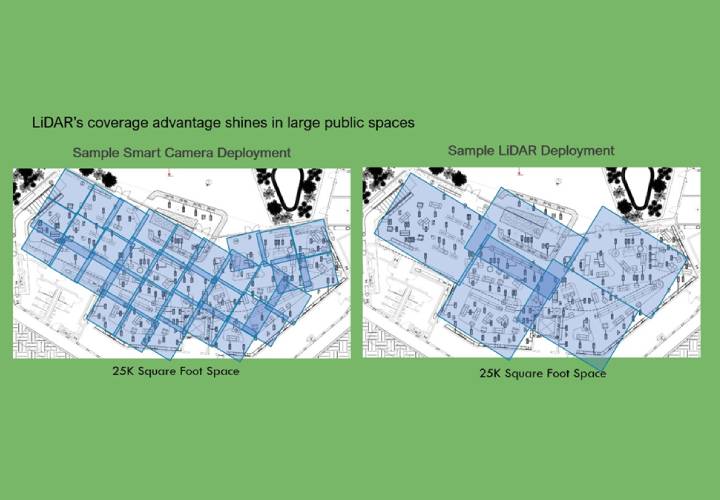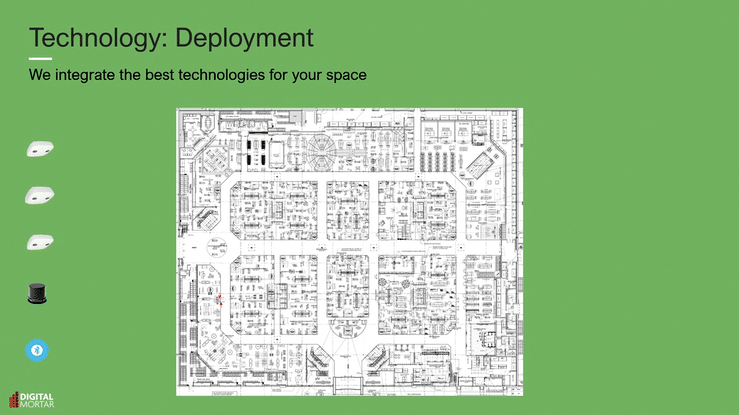People Measurement Technologies
Choosing the right sensor is a critical first step on the path to great people-measurement. We work with a wide variety of sensors and manufacturers across Camera, LiDAR and electronic technologies. None are perfect, all can be useful in the right situation.
Camera and LiDAR provide the most detailed people-measurement and are typically the back-bone of any full-journey measurement implementation. LiDAR excels in big coverage areas and wherever environmental flexibility is a prerequisite. Camera excels at smaller area measurement and wherever line-crossing/counting is all that’s required. Electronics delivers inexpensive, large area tracking and, in some cases, the ability to track specific people/assets.

-
LiDAR
Extraordinarily powerful and accurate people-measurement in real-time. Zero PII risk. Real-time. Large coverage areas and great flexibility (indoor, outdoor, any ceiling, multiple mount angles).
-
Electronics
Tag-based electronic tracking delivers continuous monitoring, asset or person-specific tracking, and wide-area coverage all at a very low cost.
-
Camera
Highly accurate people-counting and full-journey tracking across most indoor spaces. Excellent for zone measurement, queue analytics, door-counting, and other dedicated measurement tasks.
-
Mix & Match
No one technology is right. Not only do we help you pick the right sensor for your requirements, the “right” sensor might be a mix and our DM1 platform lets you seamlessly mix and match sensors in a single environment.



